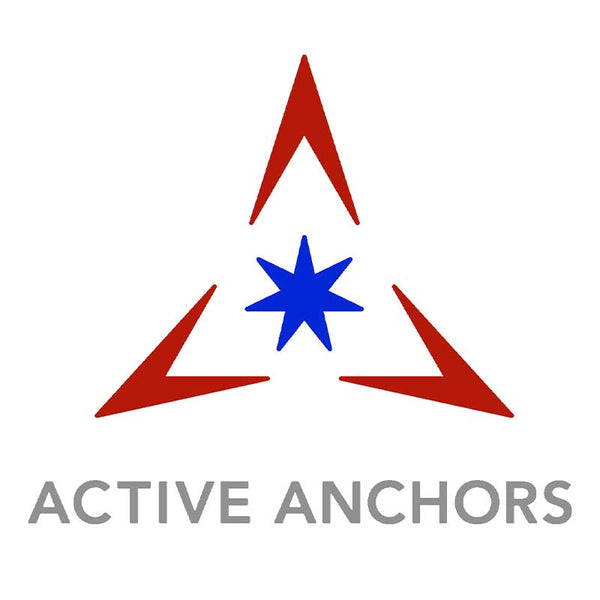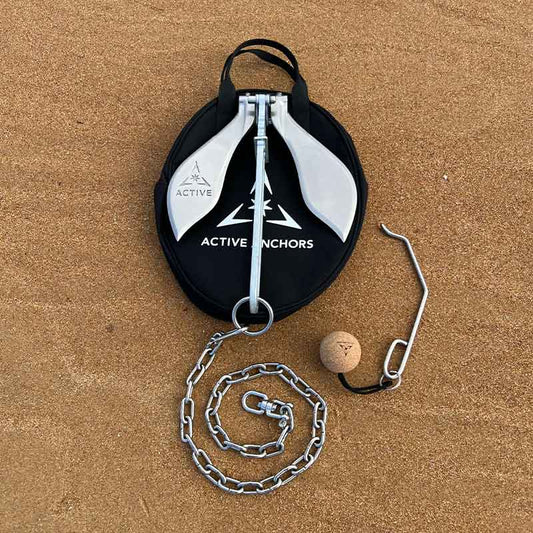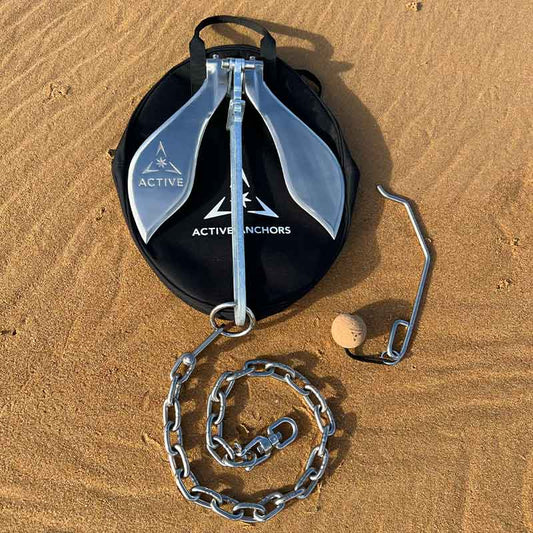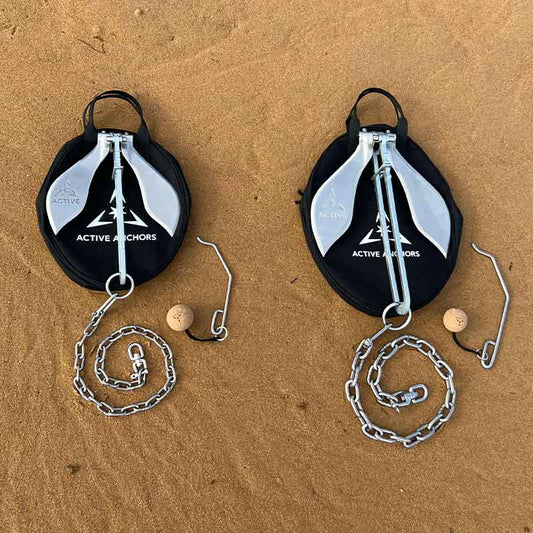Fishing anchors
Releasable anchor settings
Active Anchors are made and can be setup to be releasable. They are intended to be used on fishing boats and small watercraft in places where there is a high likelihood of getting an anchor stuck. Such as on rock and reef, or where there is a chance of snagging a rope, chain or tree roots.

Collar positions
Each bump position along the shank allows the anchor to be set to release with a certain amount of force when the anchor rope is pulled vertically. If you have the collar in the first position on a DF 300, it will take about 5 kg of force to release it. In the second position it will take about 10 kg to release when pulled vertically. in the third position it will take about 15kg. With the collar as far back as it can go, the anchor is placed a locked position and will not release. It will then operate like a fixed anchor.

Even in the soft setting, the anchor will not release when in use in sand or mud, as the flukes are forced backward, keeping them in place. If you are on rock and hard ground, where only the tip of the flukes take hold, a harder setting may be required as the anchor may release with less force. It is only when the rope is pulled vertically that the anchor will easily release.
Although the collar can be set in multiple settings, for general use, the anchor can be left in the middle (medium) position.

Slide Ring
The slide ring is to be used on rock or where there is a rope, chain or tree roots underwater. To use it, simply undo the D shackle and reattach it through the ring. Make sure the shackle pin is done up tight, as stainless-steel fittings can work loose if not tightened properly.
If the anchor gets stuck between rocks, pull the rope so the ring goes to the tail of the Anchor then pull up to release. This technique is very useful if an anchor is jammed in sideways.
If the anchor gets hooked under a rope or mooring chain, let it drop to the seafloor, then without putting load on the rope, slide the ring back away from the obstacle and pull the anchor backward to pull it free.
If you want to know more about how Active Anchors work, go here.
Active hard rock release
-
ACTIVE DF300 - Anchor for Jet Skis, Kayaks & small boats up to 4 Metres (13') in length
1 reviewRegular price $220.00 AUDRegular priceUnit price / per -
ACTIVE DF400 - Anchor for fishing boats & runabouts 4-6 Metres (14-20') in length
1 reviewRegular price $375.00 AUDRegular priceUnit price / per -
ACTIVE DF300 and DF400 Anchors
Regular price $550.00 AUDRegular priceUnit price / per



